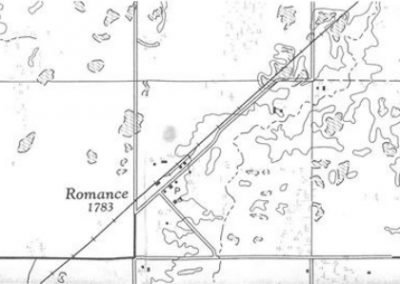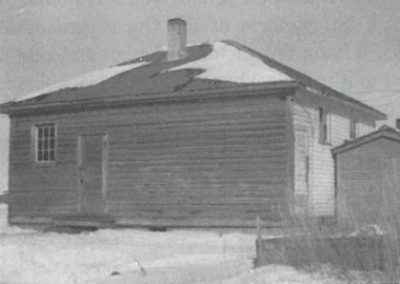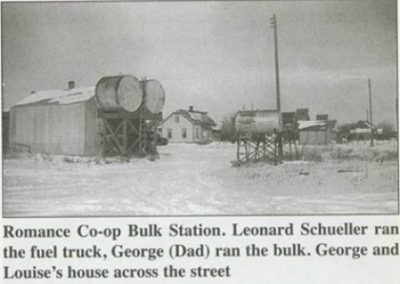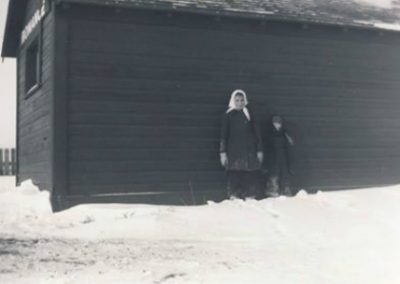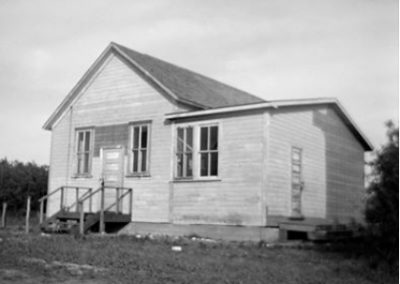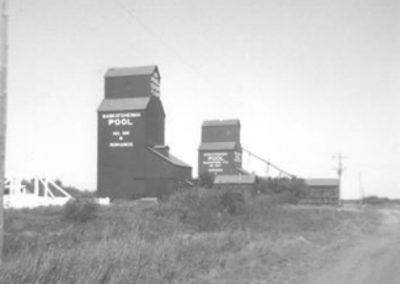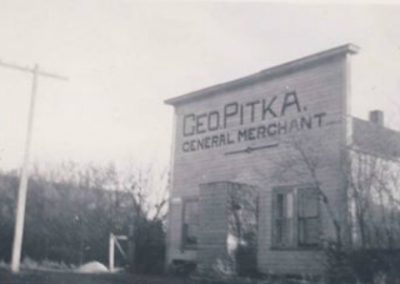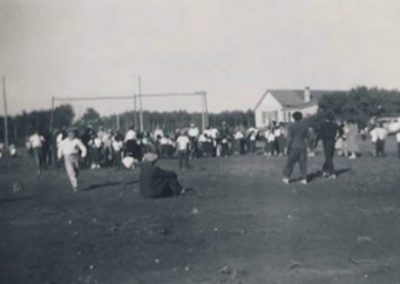No more Romance
She didn’t know it had been bulldozed to the ground until she went to visit family that lived nearby.
She also remembers when the town started to falter.
“In the 50s they moved a hall and a church into Romance, and then the church closed in ’64,” Schoettler said. “In ’75, the post office closed.”
“Better roads,” she said. “People could travel to bigger cities, closer towns, and get better service.”
All that’s left of the town now is an overgrown gravel road, a single crumbling wooden shack, and a rail line stretching from one empty horizon to the next.
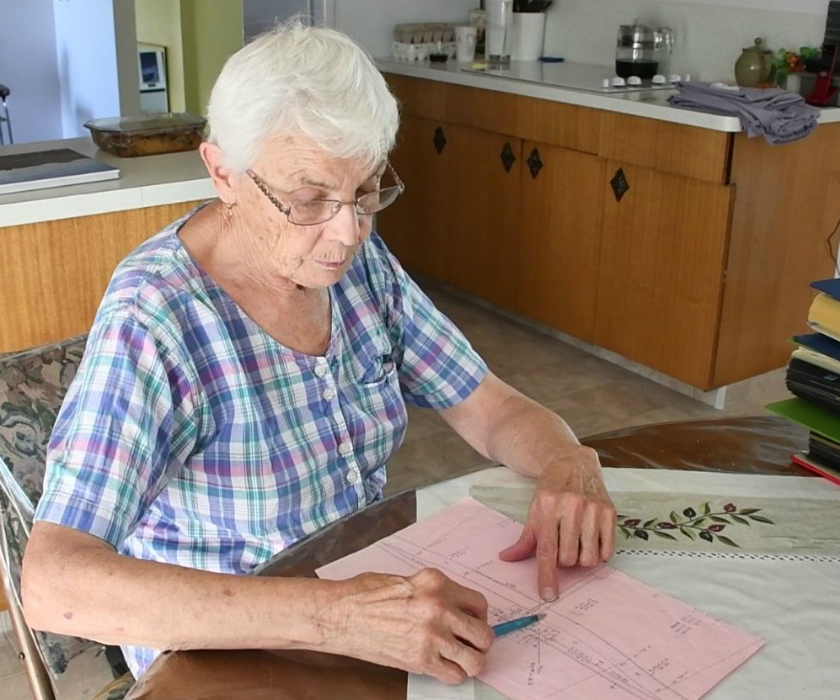
Towns on the line
“What really killed the branch lines was the highways and the trucks,” he said.
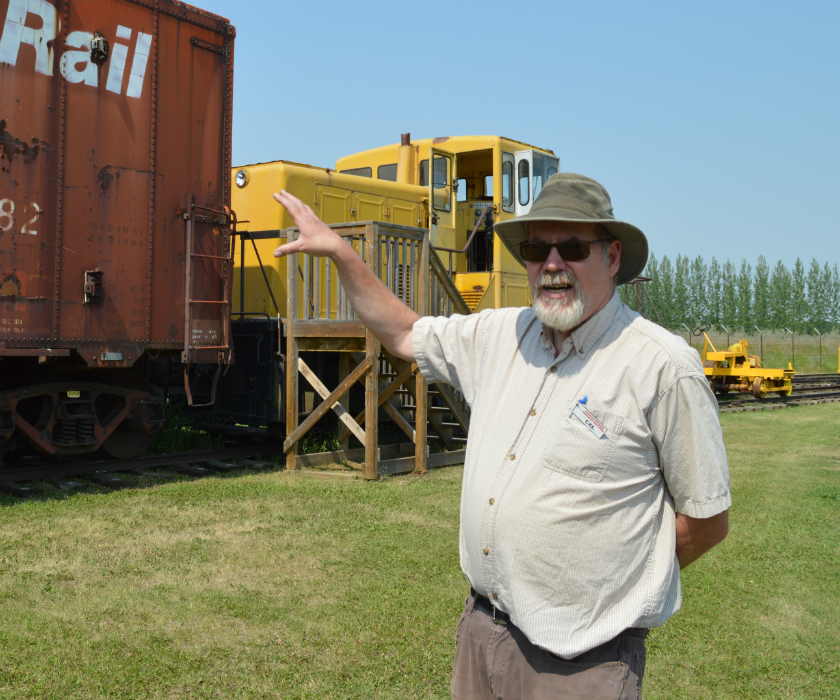
Romance fits almost perfectly along the branch line according to Sexsmith’s estimates: about six miles northeast on the line is the town of Watson. About six miles back, the town of Leroy. Further along the line, the now-derelict town of Sinnett.
But the development of highways changed transportation in the prairies. Rural roadways started criss-crossing the province in the 1940s and 1950s; Saskatchewan was the first province to complete its section of the Trans-Canada Highway in 1957. For farmers, it made more sense to have a truck instead of having to wait for the trains to pass through. Transporting crops became easier and so did shopping.
And with transportation so much easier, it became less necessary to have towns so close together, Sexsmith said.
“Now, if you look at the natural spacing on towns … it’s probably more like 30 or 40 miles,” Sexsmith said. “If you can do everything you need to do in a bigger town, why stop at the small place in between?”
One rural life for another
Schoettler left Romance in 1963 so her husband could work on the telephone lines. They ended up in Spruce Home, another tiny farming community. Spruce Home, which was never reliant on a rail line or grain elevator like Romance, persists to this day, Schoettler said. It’s also about 20 kilometres from Prince Albert, Saskatchewan’s third-largest city.
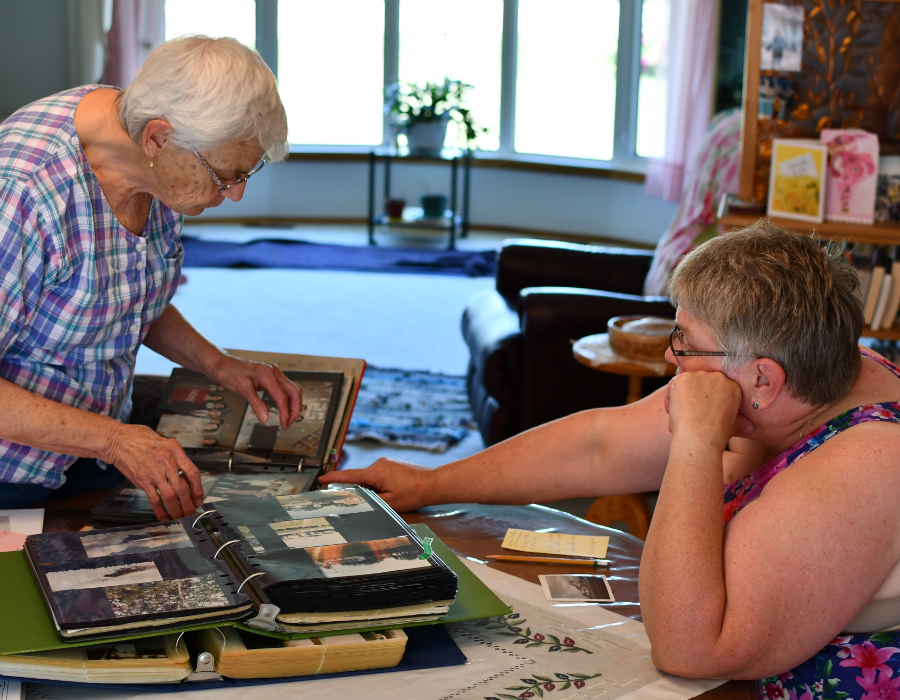
Ramona Schoettler and her daughter Barb Kowaliuk go through old photos. Photo by Matthew Olson.
“I know my kids don’t have the sense of community that I did,” Kowaliuk said. “You don’t know your neighbour liked you used to … you kind of just all checked on each other and knew what was going on.”
“I think Saskatchewan is losing that.”
Though Kowaliuk didn’t grow up in Romance, she still has fond memories of visiting relatives or going to see where her mother and grandmother used to live. It had been falling apart for years and she remembers moving her grandmother into the nearby town of Watson.
“When Romance was dying, Granny was devastated. She was hoping it was coming back,” Kowaliuk added. “She absolutely adored Romance … she did not want to leave. They carried all the stuff out of her house around her.”
Schoettler and Kowaliuk said they believe the reason the remains of Romance had to be taken down was because the rural municipality had deemed it a fire hazard.
Nonetheless, it didn’t prepare her for the shock of seeing the town simply wiped off the face of the Earth, like it had never been there.
Despite the old family home being gone, the memories are preserved.
“That’s kind of what I wanted, was when people looked at this it would spark memories of things they remember about Granny and Grandpa, or [things] they remember us doing together,” Kowaliuk said.
“It’s kind of devastating.”
But Schoettler admitted that Romance still comes to mind from time to time – and her daughter’s family history book helps with the memories.
“Some days you sit down and look in the book there and you think back and… we had a good life,” Schoettler said.
